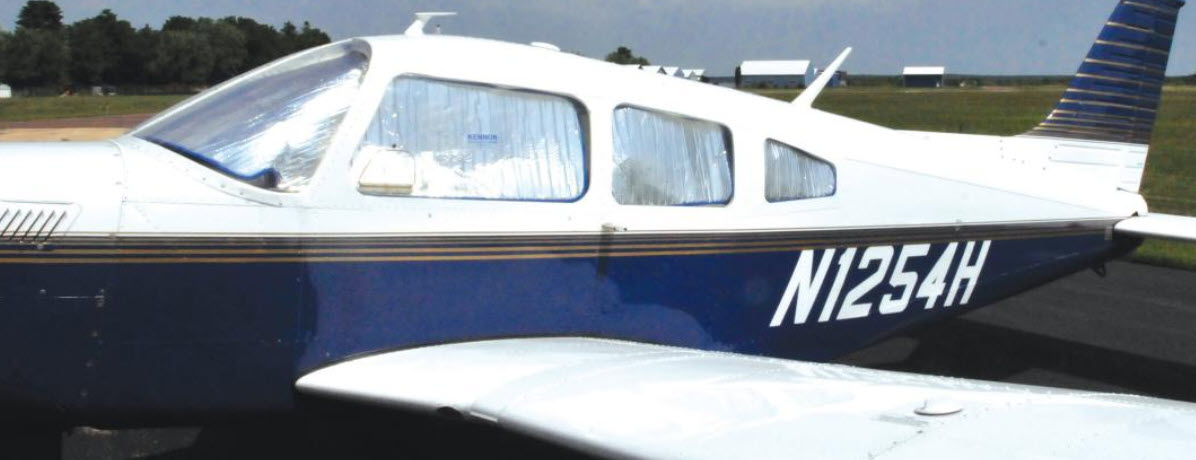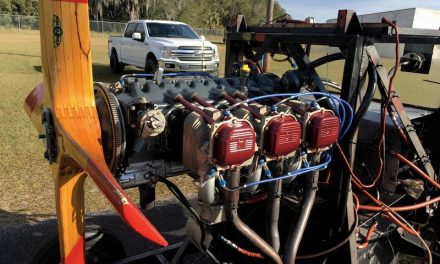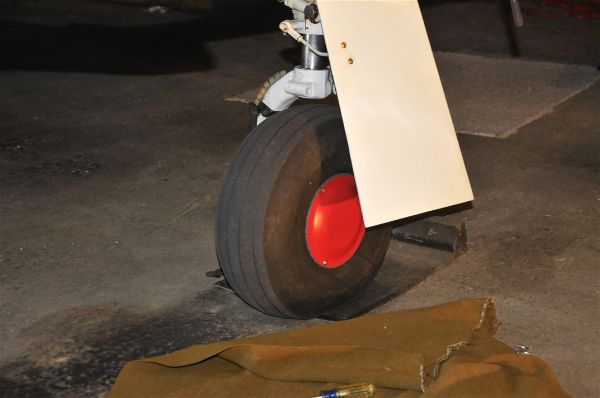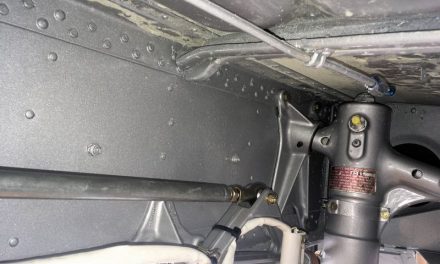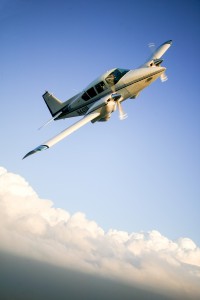 Geronimo!
Geronimo!
Legendary Apache Conversion Turns Piper’s Lovable “Sweet Potato” into a Better Bird…at a Practical Price
By Jim Cavanagh
On cold winter days I’ll sometimes look through the piles of flying magazines and books that have suddenly appeared (over the past 30 years). Every so often, a certain model airplane will catch my eye. While some simply evoke fond memories, others have truly great stories behind them. Recently, I came across a photo of me standing in front of a Piper Apache. Now THAT’S an airplane with a great story!
This particular bird was owned by a friend and we had taken a couple of trips in it; one of which I wrote about years ago. Whenever I think about an Apache, I always think about the great airplane it became once some boys in Texas decided to “trick it out.”
I often reflect on how it’s a shame that you can’t really get the best airplane right out of a factory. Instead, you get airplanes that are designed to do one thing. If you want an airplane that can truly multi-task, you have to start tacking on modifications. Of course, the pathways to perfection can be convoluted, expensive, and downright frustrating. They can also become compromises and, many times, just leaps of faith. Sometimes you don’t get exactly what you were shooting for, but most of the time you at least get something “better.” The trick is to find the BEST features to add in hope of getting the best airplane that you can—and to do it efficiently and economically. Well, this is exactly what happened with the old PA-23-150.
The Seguine Geronimo conversion is a perfect example of how airplanes can be made to do a lot of different things very well—without sacrificing too much to do so. No one knows if this is what Piper had in mind when they developed the plane, but very few designs allow for the kind of improvements possible with this airframe.
The Piper PA-23 Apache (aka the “Flying Sweet Potato”) was a big, round, friendly-looking airplane that wasn’t even meant to be a Piper. Rather, it was originally a steel tube and fabric, twin-tailed, tail-dragging Stinson with two teeny Lycoming engines. Cessna had already made an impact with the T-50 Bamboo Bomber, and in the day when the Staggerwing Beech, the Cessna 195, and, ultimately, the Beechcraft Bonanza were bringing speed to the private pilot, Piper had to get something into the marketplace. Back then, it was a matter of saving face.
Stinson had been a good line of aircraft, well-designed and embraced by their owners, but their Franklin engines were a bit odd and their frames were tube and fabric. Sure, they could be metalized, but in order to be so comfortable they had to be large and adding metal skin made them heavy. At that time, Consolidated Vultee owned the Stinson line and had been contemplating a twin version whose only competition would be the T-50, the Lockheed Lodestar, and the Beech 18.
Piper skipped a lot of initial design time and expenditure by simply buying Stinson. They built a few single-engine Piper Voyagers before dropping the line entirely. They also built one of the twin prototypes, but it flew so poorly that a redesign was in order.
Piper had good designers, but they were also, let’s say, “frugal.” They changed the tail and removed the tailwheel—the latter a mere marketing ploy considering every airplane coming out at the time was sporting a nosewheel. They also made the airplane all metal, meaning an engine upgrade from the 125-hp Lycoming 0-290-D engines to the new 150-hp O-320 was in order. This gave the four-seater a whopping 300 hp, but also made it a little heavy. Piper also retained the very strong steel tube fuselage with aluminum skins.
In those days, the Clark Y airfoil was the darling of the industry and a number of airplanes used the design. Piper modified it a bit for the Cub and called it the USA 35-B. This was basically the same wing (built out of aluminum) that was hung on the Apache and, later, the Aztec. It had a high lift-to-drag ratio, but was not a particularly fast wing. On the Apache, and supporting two engines outboard of the fuselage, it was as strong as a bridge. As such, there’s never been a spar failure in the model’s history.
To get a true picture of what a Geronimo Conversion can mean today, we need to take the last 60 years of aviation and roll it fast-forward. Back then, it just meant more speed. Then, with a few added mods, you could carry more weight. Add a few more pounds, and you could carry more fuel. It truly evolved into an airplane that could be “tricked out.”
Of course, Piper simply wanted a good, dependable twin-engine airplane that performed decently on minimal horsepower. After all, more hp equals more $–then and now. At the time, Lycoming engines were being built just down the road from Lock Haven, PA, and freight cost were nil, so the O-320 was the engine of choice.
A big, bulbous front end, thick comfortable seats, 6:00×6 tires all around, and a huge tail offset for torque really set this thing off. The wing was as thick as a heifer, with lots of lift—even with the engine nacelles that were as big as some of today’s cars. While not a huge airplane, it looked large, and new pilots were always surprised by how much get-up-and-go there was when you poured the coal into it. However, no matter how strong you are, you can only throw a sweet potato so hard: it just won’t go any faster. Ah, but a football will! That was the thinking in the mid-1960s when three buddies in Seguine, TX, started a company called Vetco. Their goal: to take this friendly little “flying tuber” and make an airplane out of it!
Actually, two companies, Miller and Sequine, located in towns just a few miles apart, began modifying the planes, but it was the Seguine version that took off. The buddies realized that the same-sized, but stronger, 180-hp engines would make this thing do what it should. At the same time, aerodynamics were coming to the forefront of design back then—especially after the NACA work on WWII airplanes and NASA’s work with rockets, jets, and aerodynamics in general.
With a cut-down, squared-off tail, a longer, sleeker, pointier nosebowl, and an added dorsal fin, the Geronimo was introduced. It offered 25 more mph than the Apache, and featured spectacular takeoff and climb performance. It not only made the four/five-seater into a real going machine, but what it did aesthetically is almost legendary.
Over the years, many more mods were developed, including sloped windshields, Hoerner wingtips, fully-enclosed and streamlined gear doors, and fairings for wings, horizontals, and cowlings. These not only added even more speed, but they added more style as well. Suddenly, the potato started looking more like a zucchini! It was slicker. It looked long and lithe. It looked fast! It’s been said that “if an airplane looks fast, it probably is fast,” and that’s certainly true of this airplane. Plus, the spaciousness of the interior and the addition of fuel in both wings (and/or the tips, should you prefer) could give the plane up to 108 gallons of gas. Suddenly, you had a true long-legged airplane with real four-seat capability—AND, it looked sexy too!
In 1996, John Talmage purchased the rights to the Geronimo Conversion. At the time, he was living in Wisconsin and wanted to get into the airplane business. Loving early Piper Twins, he found the Geronimo STCs up for sale. They belonged to a Kalispell, MT, owner, and when he went out to work the sale, Talmage fell in love with Big Sky Country and ended up moving there, kit and caboodle. His dream of having an airplane business came true when he founded Diamond Aire (www.diamondaire.com). Apaches and Aztecs are Diamond’s main business, and they currently own most of the STCs for these aircraft and specialize in their maintenance and modifications.
In the old Texas days, the airplanes were mostly fitted with mods, but today, since the fleet is getting up there in years, every Geronimo is a complete rebuild. What this means is that a new Geronimo conversion is basically a new 2014 airplane. Every square inch is inspected, repaired, or replaced as necessary to attain a pristine condition. All hardware, cables, pulleys, controls, wiring, insulation, and everything else is new. Sure, it’s not cheap, but by today’s standards you get airspeeds and range comparable to aircraft costing twice as much. Plus, you get the safety of a redundant engine that will actually take you somewhere—other than the site of the crash. (You older guys might remember this.)
To convert an Apache takes 18 STCs and considerable metal work. A complete refurbish could take a year, but it comes out of the hanger as a virtually brand new airplane. Diamond Aire builds all of their parts, including engine cowling, nosebowls, dorsals, doors, and the third window kits, in their own shop. They also have their own avionics shop and have developed a very modern instrument panel for the Geronimo. It retains a number of round gauges, but the placement is modern. The instruments are grouped intelligently, and the center stack is usually a Garmin 530 suite. They’re looking into creating a full glass panel as well.
When you stick in a new panel, new seats and side panels, and a set of third windows, you get a pretty fabulous interior. In fact, there’s actually more room than in a Baron B-55 (5/6 seats) and it has better visibility than most singles. Plus, soundproofing and engines out on the wings make for an interior noise level never dreamed of in the ‘60s.
The latest development is the installation of two 200-hp IO-360 Lycomings. Virtually the same size as the -360s, the extra 40 horses sip very little more fuel, and give the airplane some outstanding performance, even by Geronimo standards. The 200-hp version has very long legs. Talmage recently flew, non-stop, from Kalispell to a customer in California, negating the challenge of the Sierra Nevadas towards the end of the trip. He reports burning 7.3 gph per engine at 10000 ft, and truing out to 160 kts. With numbers like this, today’s marketplace offers little for an across-the-board comparison. So let’s talk cost performance vs. price.
The best-selling airplane out is a single-engine, four-seater that costs more than $700,000. Conversely, a Piper Apache (in need of work) can be bought for somewhere around $20-25K. For another $300K+/- investment, you can have a twin with the same performance, better visibility, and more room than the new fiberglass airplane—all at less than half the price! Plus, those two amazing Lycoming 200 hp engines burn the same (or even less) fuel than one Continental IO-550. The insurance and maintenance of a twin will be a wash, considering the high hull rates on the more expensive airplane. All you’d give up is the “Gee-Whiz!” quotient, and some of the modern styling.
To me, though, it’s the extra engine that tips the scales. I’ve had two engine outs over the years, and am still pulling pieces of upholstery out of my colon. Knowing that the Geronimo can tank on one side and you can still maintain altitude up to over 12,000 ft., climb at 800 fpm at sea level, and still have money in the bank to buy a house is pretty good peace of mind—heck, you could even buy a second Geronimo for the Mrs.!
Yeah, the Piper Apache has come unto its own. Serendipitously, the numbers just work out. Its big brother, the Aztec, is being rediscovered as well, but that’s another story.
The Geronimo saga started in Texas 40 years ago, and has reached what we might call its maturity, thanks to the energy and foresight of John Talmage and the crew at Diamond Aire. Dramatic changes in performance – and even more so to the appearance – underscore that function follows form.
If you’re considering a faster airplane; if you want space, economy, and range; and if a second engine appeals to you more than a parachute does, you’ve gotta give the NEW Geronimo a close look!

